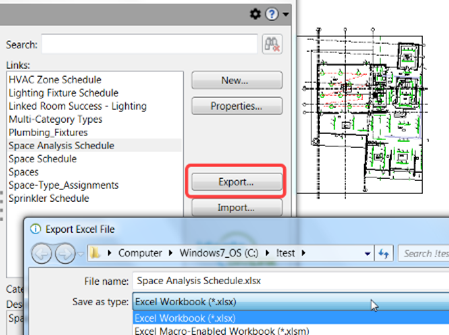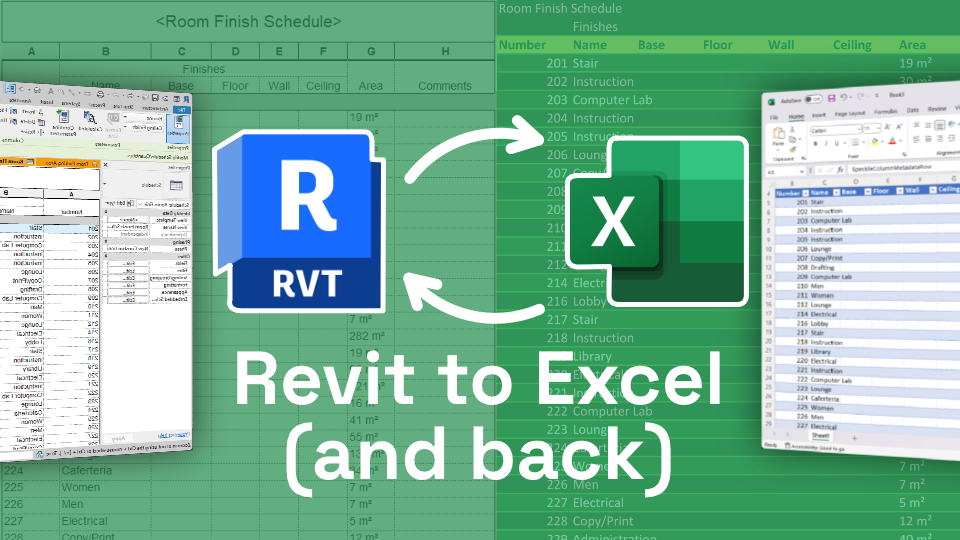Revit Add Ins: Supercharge Your Style and Modeling
Wiki Article
Mastering the Art of Information Combination: Just How to Seamlessly Import Excel Files Into Revit
In this post, we will assist you through the process of understanding the art of information combination. Obtain ready to prepare your Excel data easily and follow our detailed guide to import documents right into Revit. With our best techniques, you'll accomplish data integration success in no time.Understanding the Relevance of Information Assimilation in Revit
Recognizing the value of data assimilation in Revit is crucial for smooth importing of Excel documents. It permits you to effectively handle and update details throughout the entire job when you integrate information from Excel into Revit. This assimilation ensures that your layout and construction process is accurate and current.By integrating information, you can easily import and upgrade specifications, schedules, and also geometry in Revit. This gets rid of the requirement for hand-operated information entry, conserving you time and minimizing the risk of errors. With Revit's information combination capacities, you can maintain uniformity and precision in your job, while likewise boosting partnership amongst group members.

Discovering the Excel Documents Layout for Revit Assimilation

In order to successfully integrate Excel files right into Revit, it is crucial to guarantee that the information is formatted appropriately. This consists of properly labeling rows and columns, as well as structuring the information in a manner that works with Revit's data schema. Revit makes use of specific criteria and groups to arrange information, so it is very important to straighten the Excel information with these specifications to make certain a smooth combination.
In addition, it is necessary to note that Revit just supports particular data kinds when importing from Excel. These include text, numbers, and dates. Any various other data kinds, such as solutions or conditional format, will not be identified by Revit and may trigger issues during the integration process.
Preparing Your Excel Data for Seamless Import Into Revit
To make sure a smooth assimilation process, you'll need to effectively style and label the columns and rows in your Excel data prior to importing it right into Revit. Beginning by analyzing your Excel data and determining which rows and columns consist of pertinent details for your Revit job.Next, guarantee that the information in each column is properly formatted. If you have a column for dimensions, make certain that all measurements are consistently formatted in the same devices of measurement. Revit depends on constant formatting to accurately translate and import information.
Additionally, it is essential to check for any vacant cells or inconsistencies in your data. Revit might not have the original source the ability to check out or import data from cells that are vacant or consist of mistakes. Therefore, it is recommended to assess your Excel data and tidy up any incongruities prior to importing it into Revit.
Step-By-Step Guide to Importing Excel Data Into Revit
Once you've properly formatted and identified your Excel data, you can quickly import it right into Revit by following this step-by-step overview. To begin, open Revit and browse to the "Insert" tab. Click on "Import CAD" and pick "Import Excel" from the dropdown food selection. A new window will certainly show up, asking you to find the Excel file you intend to import. Surf your computer system and select the Excel documents, after that click "Open."Next, a dialog box will certainly show up, enabling you to personalize the import settings. Here, you can select the worksheet you intend to import, specify the series of cells to import, and select the proper devices for your data. As soon as you've made your selections, click "OK" to proceed.
Revit will certainly currently present a sneak peek of your Excel information. Take a minute to ensure and assess the sneak peek that every little thing looks right. If needed, you can make modifications to the import setups by clicking the "Settings" switch.
Finest Practices for Information Integration Success in Revit
See to it you adhere to these finest methods to ensure effective combination of information in Revit. Firstly, it is vital to arrange your data in Excel before importing it right into Revit. This implies guaranteeing constant naming conventions, appropriate formatting, and exact information representation. Next, use Revit's built-in devices for data mapping. This will certainly allow you to match the columns in your Excel file with the equivalent parameters in Revit. Bear in mind the information and systems types when mapping the data, as any inconsistencies can cause errors in the combination click this procedure.An additional vital technique is to regularly verify and upgrade your data. Additionally, make use of data recognition tools within Revit to identify any mistakes or disparities in the incorporated information.
Finally, it is advised to establish a clear workflow for data integration. This includes defining roles and obligations, establishing up a communication network between group participants, and establishing a normal tempo for information updates and testimonials. By adhering to these best practices, you can guarantee a seamless and successful combination of data in Revit, inevitably enhancing the effectiveness and precision of your task.
Verdict
Finally, grasping the art of information integration is important for seamless import of Excel files right into Revit. Understanding the importance of information assimilation in Revit is the initial read this step towards successful assimilation. Exploring the Excel documents style for Revit assimilation assists in comprehending the limitations and demands. Preparing the Excel data effectively and adhering to a detailed guide is vital for a smooth import procedure. By following best practices, you can ensure data integration success in Revit and make the most out of your task.When importing data from Excel right into Revit, it is vital to understand the data format and just how it can affect the integration process (revit tool). Revit utilizes details criteria and categories to organize information, so it is crucial to line up the Excel information with these criteria to make certain a smooth assimilation
Be mindful of the information and devices types when mapping the data, as any kind of discrepancies can lead to mistakes in the assimilation procedure.
Additionally, make use of information recognition tools within Revit to determine any kind of mistakes or variances in the incorporated data.

Report this wiki page